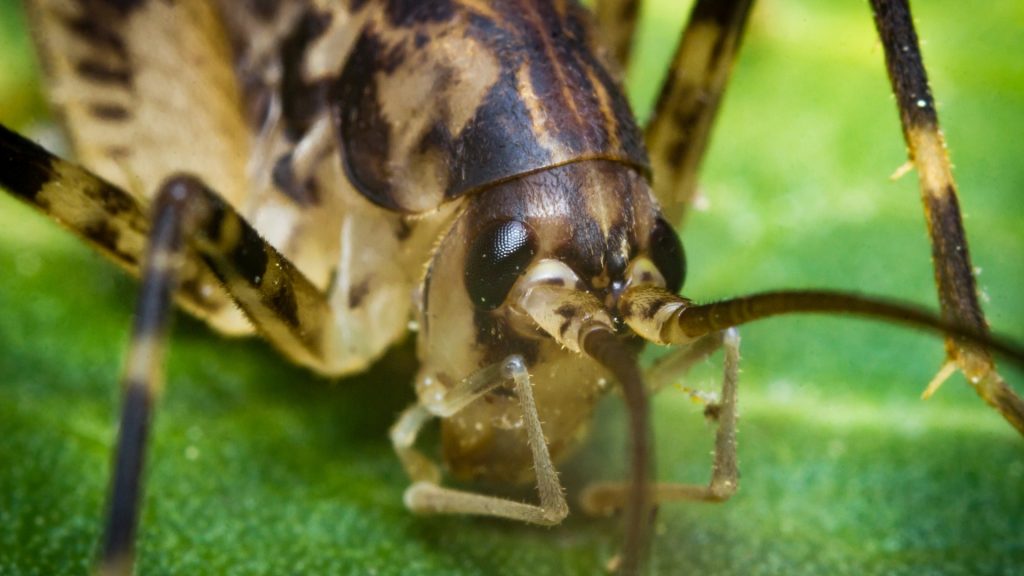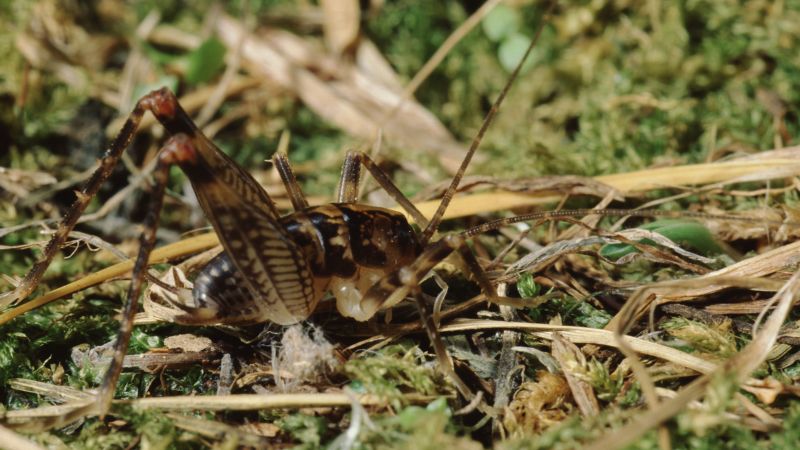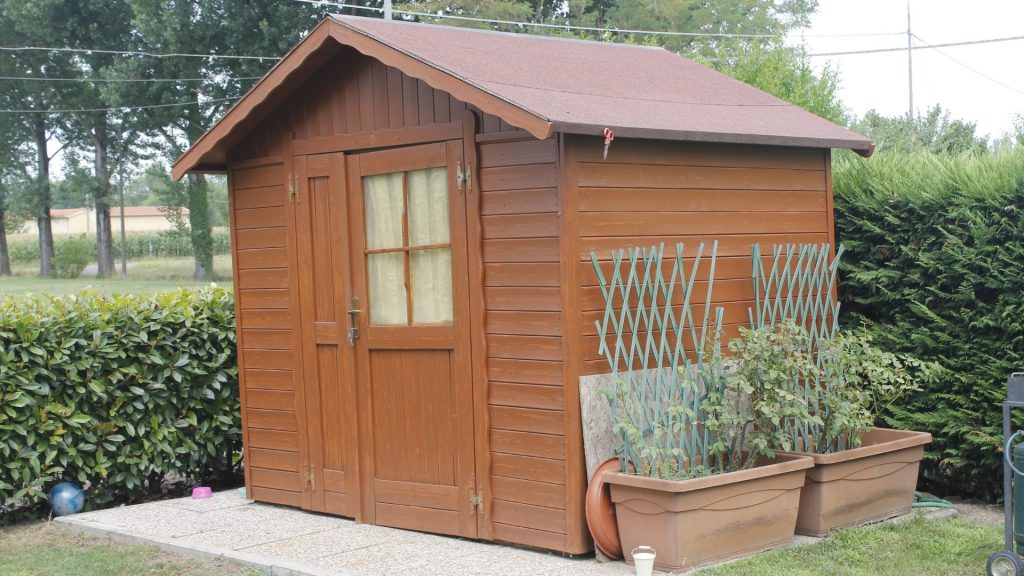Do you have cave crickets at home? Many Americans have cave crickets in their basement, so you are not alone, but there are many different methods that you can use to get rid of them. What are the best methods to get rid of cave crickets?
How to get rid of cave crickets? To get rid of cave crickets, purchase or create your own cricket traps and remove all the moisture from your rooms. Making your home unappealing for them will drive cave crickets away. They love moist places, which makes your basement and bathroom the main places where they live.
If your home has cave crickets, make sure to continue reading, as this article includes all the best methods for getting these nasty insects out of your house. Let’s begin!
What Is a Cave Cricket?

A cave cricket is an “accidental invader,” meaning they enter your home by mistake. As their name implies, these insects usually make their home in caves, but a moist basement can provide the same damp, dark conditions the cave cricket loves. They also can be found under leaves and logs outside.
What Do Cave Crickets Look Like?
Most of them come in varying shades of brown, but you can also find a black cave cricket indoors. These bugs will usually be spotted with darker spots of brown and have large hind legs. Due to their spider-like appearance, many people confuse them with species of jumping spiders.
Do Cave Crickets Bite?
These insects don’t have fangs, so they actually can’t bite you, but they do have mandibles, which allow them to “gnaw” on your skin. Many people have described this feeling as a stinging sensation.
While they technically can’t bite you, the crickets are still very unpleasant to have at home, as they will chew through your carpet, furniture, curtains, and clothing if left unchecked. They also tend to jump towards you, making many people afraid of them.
What Do Cave Crickets Eat?
Cave crickets are scavengers, so they tend to eat just about anything. They will attack other bugs and even eat members of their species and feed on dead insects when there are no alternatives.
When they are in your home, the cave cricket will eat cardboard, paper, furniture, fabrics, clothing, curtains, carpeting, and more, and can cause a lot of destruction when an infestation occurs, so you will want to get them out as soon as possible.
Related: What Do Crickets Eat? | Identification, Habitat and Behavior
Where Do Cave Crickets Live?
The cave cricket habitat is naturally outdoors in moist areas, including under rocks, leaves, woodpiles, and other wet debris, such as tall grasses and caves. In short, they live anywhere that is damp and dark.
Are Cave Crickets Dangerous?
Many people wonder if cave crickets are poisonous or harmful, but since they don’t have fangs or stingers, they are not dangerous. However, that doesn’t make them any less of a nuisance to people, as they will destroy your belongings unless you do your best to remove them immediately.
Related: Are Camel Crickets Dangerous? | Information and Facts
Cave Cricket Infestation

A cave cricket infestation can happen to anyone, but having these insects in your home doesn’t mean your living space is dirty. You can remove them once you understand what was attracting them in the first place.
Why Are Cave Crickets in My House?
Cave crickets come inside when the conditions aren’t suitable outdoors. For instance, droughts and hot weather can cause them to go into your home, so they seek basements, bathrooms, and crawl spaces for moisture.
However, excessive amounts of rain can also cause them to invade your home. If their natural habitat floods, they will seek out a new place to live, and if your home happens to be nearby, they will come in.
What Attracts Cave Crickets?
These insects are attracted to locations that are humid and moist. They also like the dark, and they use their antennae to get around without seeing. Food will also attract them.
You want to keep cardboard out of your basement, as this can attract them. If you notice these crickets are starting to come inside, make sure you add a high-quality dehumidifier to those rooms, as the lack of moisture in the air repels the crickets.
If you have a large basement, you’ll want to use the TECCPO Dehumidifier, as it’s powerful, compact, and comes with plenty of timer features. If you don’t go in the basement often, this will be a significant benefit for you.
How To Kill Cave Crickets?
You can use several methods to kill cave crickets. However, hitting them with a book or fly swatter is not a good idea, as these bugs are very large and make a huge mess when hit. Instead, keep a hand vacuum around to suck them up.
The best strategy to kill cave crickets is by using a glue or tape trap. Any sticky trap should do the trick. You can buy them online, or you can make your own easily. For instance, tape traps include tape loops with bait such as cat food or cardboard.
Here are some excellent products you can try:
- The solution to get rid of crickets in house - Our cricket sticky...
- Easy To Use Bug Traps - Simply peel back the paper exposing the...
- Non-Toxic - Our insect traps sticky indoor are safe, poison free,...
- 12 Pre-Baited Large Glue Traps - The bug traps sticky indoor...
- The Trap A Pest Promise - If for any reason you're not completely...
- ✅ OPTIMAL SOLUTION: Keeping your house free of crickets is...
- ✅ HOW THEY WORK: Unlike other chemical-based solutions, our...
- ✅ NON-TOXIC & INSECTICIDE-FREE: Made with an industrial-grade...
- ✅ EASY, EFFECTIVE & LONG-LASTING: Just peel and place the trap...
- ✅ WHAT YOU GET: Each box comes with 8 pre-baited extra-large...
- Long Lasting - Traps crickets for weeks at a time
- Easy to Use - Simply fold the trap and insert the tab at the top...
- Discreet - Slides easily under furniture and bedding
- Versatile - For residential and commercial use
- 2 Traps - Two large traps included in each package
- READY TO USE: Cricket XL Giant Glue Traps are intended for use...
- MAXIMUM PROTECTION: Catchmaster glue traps are pesticide-free and...
- HOME & FAMILY PROTECTION: Designed to help you keep your family...
- TOTAL COVERAGE: The indoor bug catcher can be used in...
- INTELLIGENT PEST MANAGEMENT: At our core, we are dedicated pest...
- Glue traps for crawling, jumping, slithering pests
- Scented glue attracts insects, crickets & spiders, Pre-baited...
- Made in USA by JT Eaton, pest experts since 1932
- Adhesive works in variety of temps, even in cold: Non-drying,...
- Each Trap: 10”L x 2.5”W
Cave crickets get stuck when trying to get the bait, then become bait for the next cave cricket to stumble across the trap. You need to change the tape often so that it is never full, which is easy to do, and the tape is pretty cheap.
How Do You Get Rid of Cave Crickets in Specific Places?
If you have cave crickets in your shed or the house, how can you get rid of them?
How To Get Rid of Cave Crickets in Shed?

- Step 1: Start by cleaning up all debris around your shed, which can include logs, twigs, piles of leaves, or even stacks of firewood. You want the immediate area around your shed to be clean.
- Step 2: Then, block off all entrances to the shed with tape or insulation.
- Step 3: From there, you can use cave cricket spray around the shed and place sticky traps inside of it.
- Step 4: If it feels humid in the shed, you will want to add a small dehumidifier.
How To Get Rid of Cave Crickets in House?
- Step 1: Whenever you see a cricket, make sure to suck it up with a hand vacuum.
- Step 2: Then, add a dehumidifier. Doing so makes your home less attractive to these creatures, and as the moisture leaves the air, the crickets will seek out other places to live.
- Step 3: Place sticky traps in the areas where you see the crickets the most, and if you have a cat, they will enjoy hunting these insects.
How To Get Rid of Cave Crickets in Basement?

- Step 1: Start by drying the basement as much as possible. As with the previous methods, add a dehumidifier if necessary.
- Step 2: When it feels dry, add a large bowl of water with dish soap to the middle of the room. The crickets will jump in, but they will be unable to climb out.
- Step 3: At the same time, place plenty of traps around the basement.
How To Get Rid of Cave Crickets in Garage?
You can remove cave crickets using sticky traps here too. However, the garage usually has many small entrances to the outside. You will also want to spray bug spray around the perimeter of the room.
What Repels Cave Crickets?
Once you’ve rid your property of cave crickets, how can you keep them from coming back? Here are several ways you can keep your home and garden safe from these insects.
Cave Cricket Traps
Traps ensure that the crickets can’t settle into your home. Adding sticky traps and other DIY traps helps prevent them from moving in, as well as several excellent commercial products you can use too.
- Long Lasting - Traps crickets for weeks at a time
- Easy to Use - Simply fold the trap and insert the tab at the top...
- Discreet - Slides easily under furniture and bedding
- Versatile - For residential and commercial use
- 2 Traps - Two large traps included in each package
Cave Cricket Insecticide
Insecticide made for cave crickets works wonders at repelling them. Make sure to choose a product that can guarantee protection from these invasive insects for months. Here are some products you can get:
- Ortho Home Defense Insect Killer for Indoor & Perimeter2 kills...
- This insect killer spray provides a long-lasting bug barrier of...
- Use this pest control spray indoors in kitchens and bathrooms or...
- Apply this bug killer anytime as a preventative treatment or...
- This 1.33 gal. container of Ortho Home Defense Insect Killer for...
- EFFECTIVE AGAINST MULTIPLE SPECIES: Specifically attracts ants...
- WEATHER-RESISTANT GRANULES: Designed to withstand rain, heat, and...
- NO KNOWN RESISTANCE: Formulated with boric acid, this bait...
- SAFE FOR USE AROUND HOMES: It is ideal for both residential and...
- EASY-TO-USE COMFORT GRIP CONTAINER: This container features a...
- ✅ OPTIMAL SOLUTION: Keeping your house free of crickets is...
- ✅ HOW THEY WORK: Unlike other chemical-based solutions, our...
- ✅ NON-TOXIC & INSECTICIDE-FREE: Made with an industrial-grade...
- ✅ EASY, EFFECTIVE & LONG-LASTING: Just peel and place the trap...
- ✅ WHAT YOU GET: Each box comes with 8 pre-baited extra-large...
- Start killing ants, roaches, spiders, fleas and ticks with Ortho...
- This insect control spray kills listed bugs and protects your...
- Use this indoor insect spray in kitchens, bathrooms and...
- Create an insect barrier anytime as a preventative treatment or...
- Apply Ortho Home Defense Max Indoor Insect Barrier using the...
- VERSATILE PARTNER, PROVEN EFFECTIVENESS: Talak 7.9%...
- ONE SOLUTION COVERS IT ALL: Our water-based formula can be used...
- BROAD-SPECTRUM INSECT KILL: Talak 7.9% Indoor/Outdoor Insect...
- KILLS ON CONTACT, WORKS UP TO 3 MONTHS: Expect fast results with...
- GET THE WATER-BASED ADVANTAGE: Getting rid of bugs shouldn’t...
Cave Cricket Killer Spray
Finally, there are sprays you can use to kill the crickets outright, if you want something more convenient to use. Spray any wandering crickets you see at home, as they will be killed immediately.
- Repels crickets and helps keep them out of your home
- Formula is safe for indoor use when used as directed
- Long-lasting protection for baseboards, closets, and entry points
- Easy-to-use spray for quick and effective application
- Made in the USA with trusted ingredients
- Ortho Home Defense Insect Killer for Indoor & Perimeter2 kills...
- This insect killer spray provides a long-lasting bug barrier of...
- Use this pest control spray indoors in kitchens and bathrooms or...
- Apply this bug killer anytime as a preventative treatment or...
- This 1.33 gal. container of Ortho Home Defense Insect Killer for...
- PET-FRIENDLY & FAMILY-SAFE FORMULA – Mighty Mint is a top pick...
- POWERFUL PLANT-BASED PEST CONTROL – Formulated with...
- EFFECTIVE INDOOR & OUTDOOR USE – Designed for versatile...
- FRESH MINTY SCENT WITH LONG-LASTING EFFECT – Infused with pure...
- READY-TO-USE 16 OZ SPRAY FOR TARGETED APPLICATION – Perfect for...
- Quick and Easy to Apply, Mess-Free Cleanup
- Safe and Reliable When Used Properly (see pet safety information)
- Extra Strength Formula for Long-Lasting Results
- Real-World Proven, Naturally Effective Ingredients
- Maximum Strength Premium-Grade Peppermint Oil
- Start killing ants, roaches, spiders, fleas and ticks with Ortho...
- This insect control spray kills listed bugs and protects your...
- Use this indoor insect spray in kitchens, bathrooms and...
- Create an insect barrier anytime as a preventative treatment or...
- Apply Ortho Home Defense Max Indoor Insect Barrier using the...
How To Kill Cave Crickets Naturally
If you have young children or pets in your home, there are many non-chemical ways to kill cave crickets. Here are some natural methods you may want to try:
How To Kill Cave Crickets Using Home Remedies?
There are also home remedies that you can experiment with. Boric acid and honey mixtures make the perfect natural killer. Or, you can try Diatomaceous earth or cedar oil. Cedar oil emulsifies them, making it an excellent way to avoid future infestations.
This video can help you remove cave crickets naturally:
Best Natural Cave Cricket Repellent
Cave crickets hate the smell of lemons, peppermint, and cinnamon the most, so you should use cleaners based on these scents when dealing with an infestation. The smell is powerful to them, making them keep their distance.
Related: Home Remedies for Cricket Control: How To Get Rid of Crickets Naturally?
How To Keep Cave Crickets Away?
Overall, keeping these crickets away means keeping your home dry and debris away from your foundation. If you can do that, the crickets shouldn’t enter your home when the conditions outside aren’t suitable for them anymore.
Summary
There are plenty of ways to control these insects. Making traps and using DIY remedies will significantly help interrupt the cave cricket life cycle. When you remove these invasive species consistently, you can expect to have them all out in no time at all.
List of Sources
Cornell University. (n.d.). Cave (Camel) Crickets.
Hahn, J., & Ascerno, M. (2019). Crickets.
Lewis, D. (1992). Cave Crickets.
Rossi, C. M. (2013). Crickets: A Sense for Scents. Exploring Natural Insect Repellants.
- Bed Bug Surge 2025: How to Detect, Prevent, and Safely Eliminate Infestations in Top U.S. Cities - June 18, 2025
- Asian Needle Ants Invade US Homes: 2025 Guide to Identification, Risks, and Effective Control - June 11, 2025
- New World Screwworm Alert: How US Livestock Owners Can Prevent Outbreaks and Protect Herds [Summer 2025 Update] - June 8, 2025













